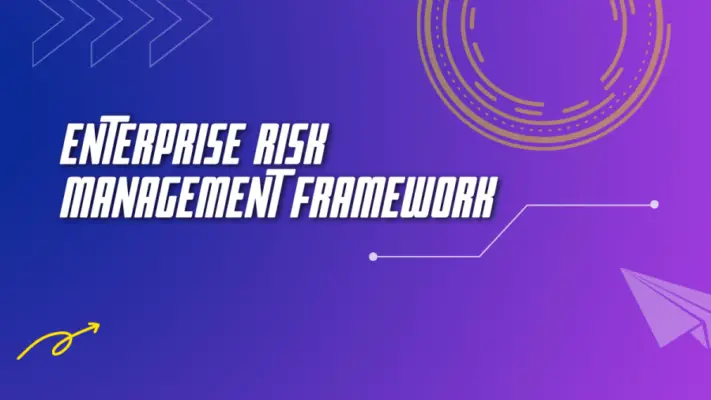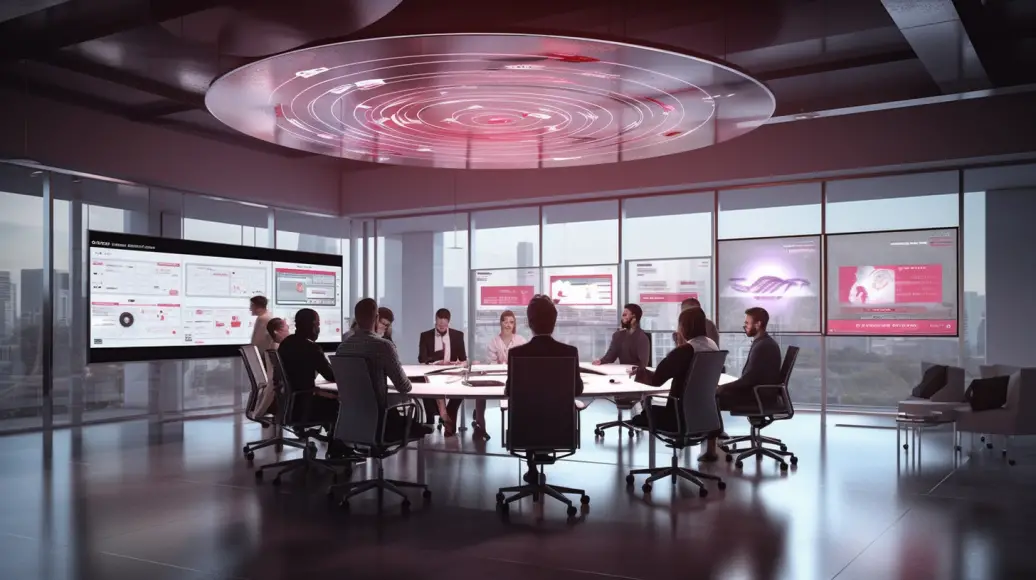GRC stands for Governance, Risk Management, and Compliance. A GRC framework refers to an organization’s structured approach to align its overall governance, risk, and compliance processes with its business objectives.
Here’s a brief explanation of each component:
Governance: This refers to the overall management approach through which senior managers/executives direct and control the entire organization, using a combination of management information and hierarchical management control structures.
Governance activities ensure that critical management information reaching the executive team is sufficiently complete, accurate, and timely to enable appropriate management decision-making.
Risk Management: This refers to the identification, assessment, and prioritization of risks followed by the coordinated and economical application of resources to minimize, monitor, and control the probability or impact of unfortunate events or to maximize the realization of opportunities.
Risk management’s objective is to assure uncertainty does not deflect the endeavour from the business goals.
Compliance: This refers to the organization’s goal to ensure that they know and take steps to comply with relevant laws, policies, and regulations. Due to the increasing number of regulations and the need for operational transparency, organizations are increasingly adopting the use of consolidated and harmonized sets of compliance controls.
A GRC framework helps an organization achieve efficiency, effectiveness, and agility in managing governance, risk, and compliance. It also helps reduce duplication of efforts and ensures that the strategies and objectives of the organization are met.
GRC provides a structured framework that enables organizations to identify, assess, and mitigate risks across all business operations. The GRC framework is essential in today’s dynamic business environment, where regulatory compliance is becoming increasingly complex and the consequences of non-compliance are severe.
The GRC framework comprises three major components: Governance, Risk Management, and Compliance. Governance refers to the processes and structures that enable effective decision-making and accountability within an organization.
Risk Management involves identifying, assessing, and mitigating risks that could impact an organization’s ability to achieve its objectives. Compliance ensures that an organization adheres to applicable laws, regulations, and standards.
The GRC framework is a collaborative effort that involves multiple stakeholders, including the board of directors, senior management, compliance teams, risk management teams, and internal auditors.
This article will explore the key elements of the GRC framework, GRC processes, and the benefits of an integrated GRC approach, as well as discuss MetricStream’s GRC solution.

GRC Overview
The GRC framework is a crucial component of GRC initiatives to manage risks and comply with regulations. It provides direction and control for managing Defence Estates through strategic direction, roles and responsibilities, legislation and policy, compliance and assurance, and reporting estate incidents.
This framework describes the interrelationships between stakeholders, legislation, internal processes, rules, regulations, approvals, and instructions.
The major elements of the GRC Framework include:
- Strategic direction defines the organization’s objectives and the means to achieve them.
- Roles and responsibilities, which describe the functions, activities, and accountabilities of stakeholders
- Legislation and policy establishes the legal and regulatory framework within which the organization operates.
- Compliance and assurance ensure that the organization complies with legal and regulatory requirements and meets stakeholder expectations.
- Reporting estate incidents enables the organization to monitor and manage risks and incidents.
The GRC framework provides a systematic approach to managing Defence Estates, ensuring that the organization operates within a transparent, accountable, and efficient governance structure.
As such, the GRC framework is essential for organizations seeking to manage risks and comply with regulations while achieving their objectives.
GRC Processes
Streamlining Governance, risk, and Compliance (GRC) processes through common control, definition, enforcement, and monitoring is crucial for integrating initiatives and enhancing risk visibility.
Poor coordination and siloed initiatives can hinder this visibility and increase overall business risk. The GRC framework provides a formal process for integrating initiatives by defining business objectives, corporate control, key policies, risk management, and compliance management.
The governance process oversees compliance and business risks, evaluating all risks at the enterprise level and relevant controls to monitor mitigation actions. Risk management provides a formal process to identify, measure, and manage risk.
Compliance ensures processes and internal controls meet regulatory, industry, or internal policy requirements. An effective GRC solution framework includes governance, enterprise risk management, board compliance, business performance reporting, policy management, risk identification and reporting, and risk assessment.
It includes risk analysis and prioritization, root cause analysis, risk analytics, flexible controls hierarchy, assessments and audits, issue tracking and remediation, and analytics.
The GRC management of environmental, social, and governance (ESG), cyber, third-party risk management (TPRM), and other risks have evolved into distinct yet connected disciplines.
The GRC solution must support complex organization models and multiple regulations. Successful GRC programs integrate into the company culture, ethics, and principles.
Key roles such as the Chief Financial Officer, Chief Compliance Officer, and Chief Risk Officer are important for GRC insight across the organization.
An integrated approach to GRC is essential to manage multiple governance, risk, and compliance initiatives across the organization, ultimately promoting organizational success.
Key Roles
Key players in promoting a successful integrated GRC approach include the Chief Financial Officer, Chief Compliance Officer, Chief Risk Officer, Audit Managers, Quality Managers, and HR Managers.
Each role is unique and critical in ensuring the organization can effectively manage risks, comply with regulations, and achieve its objectives.
The CFO provides leadership in financial compliance and SOX certification, while Compliance Managers ensure that processes and controls are in place to meet regulatory and policy requirements.
The Chief Compliance Officer focuses on effectively rationalizing controls to provide a clear, unambiguous process for compliance management. At the same time, Risk Managers identify core business areas where the organization should be willing to retain risks to seize growth opportunities and generate returns for investors.
Audit Managers monitor risks and ensure compliance across organizational silos, while Quality Managers proactively manage quality processes to comply with industry mandates.
HR Managers provide an integrated training platform to ensure compliance with HR policies and procedures, compliance with governmental health and safety regulations, and compliance training and certification.
These roles help ensure the organization can effectively manage risks and comply with regulations across all business areas. By working together to promote an integrated GRC approach, these roles can help the organization achieve its objectives and ensure long-term success.
In addition to these roles, top sustainability executives and chief sourcing officers also play important roles in promoting an integrated GRC approach.
These roles are responsible for overseeing environmental, social, and governance aspects of the organization, as well as monitoring and mitigating new and existing risks from suppliers, containing costs, and accelerating business performance.
Working with other key players in the organization, these roles can help ensure that the organization can effectively manage risks and comply with regulations in all business areas while promoting long-term sustainability and success.
Benefits of Integration
The integrated GRC approach significantly impacts organizational effectiveness and cost savings by eliminating redundant work, duplicate data entries, and duplicative software, hardware, training, and rollout costs.
An integrated approach to Governance, Risk, and Compliance (GRC) has numerous benefits. Here are four key benefits of integrated GRC:
- Streamlined processes: An integrated GRC approach eliminates silos and promotes cross-functional collaboration. It streamlines processes by providing a centralized platform to manage multiple governance, risk, and compliance initiatives across the organization.
- Improved visibility: An integrated GRC approach provides a ‘single version of the truth available to employees, management, auditors, and regulatory bodies. It improves visibility into risks and compliance status, enabling better decision-making and risk management.
- Enhanced compliance: An integrated GRC approach significantly reduces the cost of compliance by eliminating duplicative efforts and providing a more efficient and effective compliance program. It ensures that the organization complies with regulatory, industry, or internal policy requirements.
- Increased efficiency: An integrated GRC approach promotes efficiency by eliminating redundant work and duplicate data entries. It enables the organization to save time and resources and focus on core business activities.
An integrated GRC approach is essential for managing multiple governance, risk, and compliance initiatives across the organization. It streamlines processes, improves visibility, enhances compliance, and increases efficiency.
Organizations that adopt an integrated GRC approach can achieve significant cost savings, improve organizational effectiveness, and achieve a competitive advantage.

MetricStream Solution
MetricStream provides various software solutions that help organizations manage various aspects of risk and compliance. These solutions include IT risk and compliance, third-party risk management, business continuity management, threat and vulnerability management, internal audit, and case and incident management.
Organizations can proactively manage risks, comply with regulations, and improve operational efficiency with these solutions.
One of MetricStream’s IT risk and compliance products ensures a proactive approach to IT risk management and sustained compliance with IT controls at lower costs.
Another product line, business continuity management, helps establish a centralized and integrated approach to managing BCM activities with capabilities to streamline workflows and automate metric computations.
Finally, the case and incident management product enables organizations to establish consistent procedures for incident capture, exception logging, loss event tracking, task management, and status reporting.
To provide a clearer picture of MetricStream’s software solutions, the following table outlines the various product lines and their respective focus areas:
| Product Line | Focus Area |
|---|---|
| IT Risk and Compliance | Centralized and integrated approach to managing BCM activities |
| Third-Party Risk Management | Management of third-party risks and compliance with regulations |
| Business Continuity Management | A centralized and integrated approach to managing BCM activities |
| Threat and Vulnerability Management | Proactive identification and management of threats and vulnerabilities |
| Internal Audit | Streamlined audit planning, execution, and reporting |
| Case and Incident Management | Consistent procedures for incident capture, exception logging, loss event tracking, task management, and status reporting |
MetricStream offers a comprehensive suite of software solutions that help organizations manage various risk and compliance aspects.
Organizations can improve operational efficiency by using these solutions, proactively managing risks, and complying with regulations.
Frequently Asked Questions
What specific regulations or industry standards does the GRC Framework address?
The GRC Framework provides direction and control for managing Defence Estates by describing interrelationships between stakeholders, legislation, internal processes, rules, regulations, approvals, and instructions.
It addresses relevant regulations, industry standards, and internal policies to ensure compliance and effective risk management.
How does the GRC Framework integrate with an organization’s overall strategy?
The GRC framework integrates with an organization’s overall strategy by providing direction and control for managing risks and complying with regulations.
It describes interrelationships between stakeholders, legislation, internal processes, and reporting estate incidents, among other elements, to ensure the achievement of objectives, address uncertainty, and act with integrity.
What are some common challenges organizations face when implementing an integrated GRC approach?
When implementing an integrated GRC approach, organizations’ common challenges include poor coordination, siloed initiatives, and lack of visibility into risks. Streamlining GRC processes through common control, definition, enforcement, and monitoring can help integrate initiatives and reduce the cost of compliance.
Can the GRC Framework be customized to fit specific industries or organizational structures?
The GRC framework can be customized to fit specific industries or organizational structures. It provides direction and control for managing various governance, risk, and compliance initiatives across the organization and can be tailored to meet specific needs.
How does the GRC Framework address emerging risks and threats, such as cybersecurity and environmental sustainability?
The GRC framework addresses emerging risks and threats such as cybersecurity and environmental sustainability by providing a comprehensive approach to managing governance, risk, and compliance initiatives.
The framework includes processes for enterprise risk management, board compliance, business performance reporting, policy management, risk identification and reporting, risk assessment, risk analysis and prioritization, root cause analysis, risk analytics, assessments and audits, issue tracking and remediation, and analytics. The framework can be customized to fit specific industries or organizational structures.

Conclusion
The governance, Risk, and Compliance (GRC) framework is essential for organizations to manage risks, comply with regulations, and achieve their objectives. The framework encompasses various aspects of an organization, including finances, infrastructure, environment/heritage, and workforce.
The GRC framework comprises three core elements: Governance, which involves establishing policies and procedures to ensure compliance with laws and regulations;
Risk management involves identifying, assessing, and mitigating risks; and Compliance, involves ensuring adherence to internal policies and external regulations.
The GRC processes involve defining the organization’s objectives, identifying potential risks, assessing the likelihood and impact of those risks, implementing controls to mitigate the risks, monitoring and reporting on the effectiveness of the controls, and continuously improving the GRC framework.
Key roles in the GRC framework include the board of directors, executive management, risk management, compliance, and internal audit.
The benefits of an integrated GRC approach include improved risk management, increased compliance, reduced costs, enhanced decision-making, and better alignment of GRC with business objectives.
MetricStream’s GRC solution provides a comprehensive platform for managing GRC processes, including risk management, compliance management, policy management, audit management, and vendor risk management.
The GRC framework is critical for organizations to manage risks, comply with regulations, and achieve their objectives. The framework comprises three core elements: Governance, Risk management, and Compliance.
The GRC processes involve defining objectives, identifying risks, assessing likelihood and impact, implementing controls, monitoring and reporting, and continuously improving the framework. Key roles in the framework include board of directors, executive management, risk management, compliance, and internal audit.
An integrated GRC approach offers numerous benefits, including improved risk management, increased compliance, reduced costs, enhanced decision-making, and better alignment of GRC with business objectives.
MetricStream’s GRC solution provides a comprehensive platform for managing GRC processes, enabling organizations to achieve their objectives with integrity.

Chris Ekai is a Risk Management expert with over 10 years of experience in the field. He has a Master’s(MSc) degree in Risk Management from University of Portsmouth and is a CPA and Finance professional. He currently works as a Content Manager at Risk Publishing, writing about Enterprise Risk Management, Business Continuity Management and Project Management.

